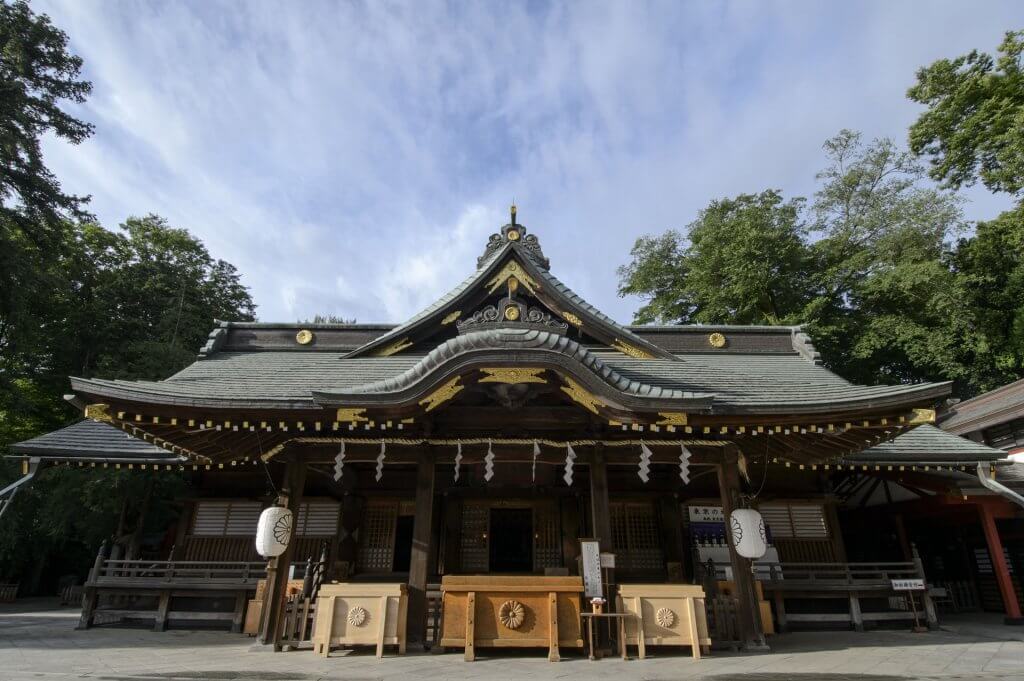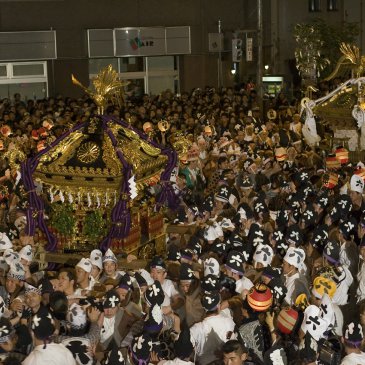The Okuninotama Jinja Shrine, located in its current location of Huchushi, Tokyo, was founded during the period of the 12th emperor Suiko and enshrines the deity called Okuninota no okami. It is said that the deity revitalized the area of Musashinokuni (former name of the current west side of Tokyo) and brought food, clothing, and shelter. Since the creation of the shrine, it has been regarded as a guardian of the area for over 1900 years.
In 1590, when Tokugawa Ieyasu moved to the Kanto region (Tokyo, Saitama, Chiba, Kanagawa, Tochigi and Gunma prefectures), he greatly respected the shrine, and so decided to donate estate property to the shrine. The honden (main hall) of this shrine was built on the west side of the grounds and Ieyasu frequently visited the area to hunt with his pet falcon. Ever since he came to Kanto region, he had a deep connection with the shrine.
It is recorded that before heading to battle of Sekigahara, a priest of the shrine prayed for Ieyasu’s victory. After Ieyasu’s death, he was buried at Mount Kuno, but his body was transferred to Nikko one year later. The transfer took 19 days and on his way to Nikko, his body stayed at the honden where he used to visit and hold rituals. Later, the Toshogu Shrine was built as a branch of the shrine at the same grounds under order of the second shogun of the Tokugawa Dynasty, Tokugawa Hidetada.


